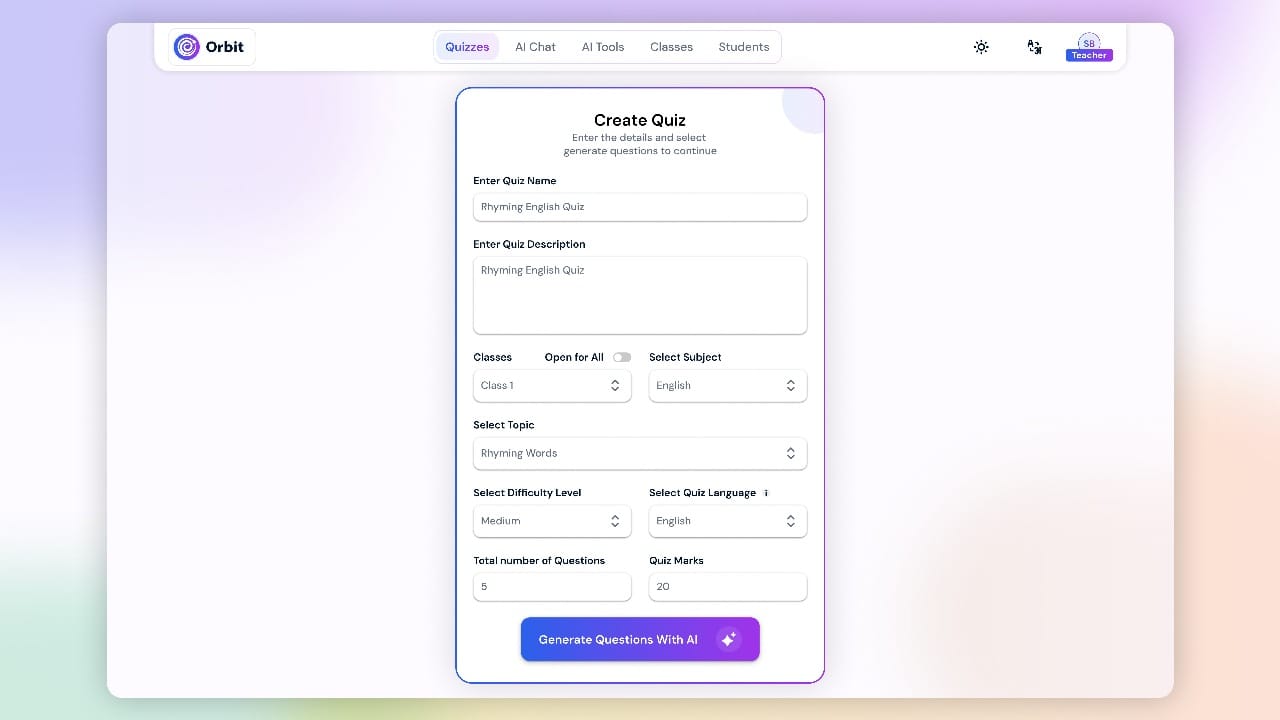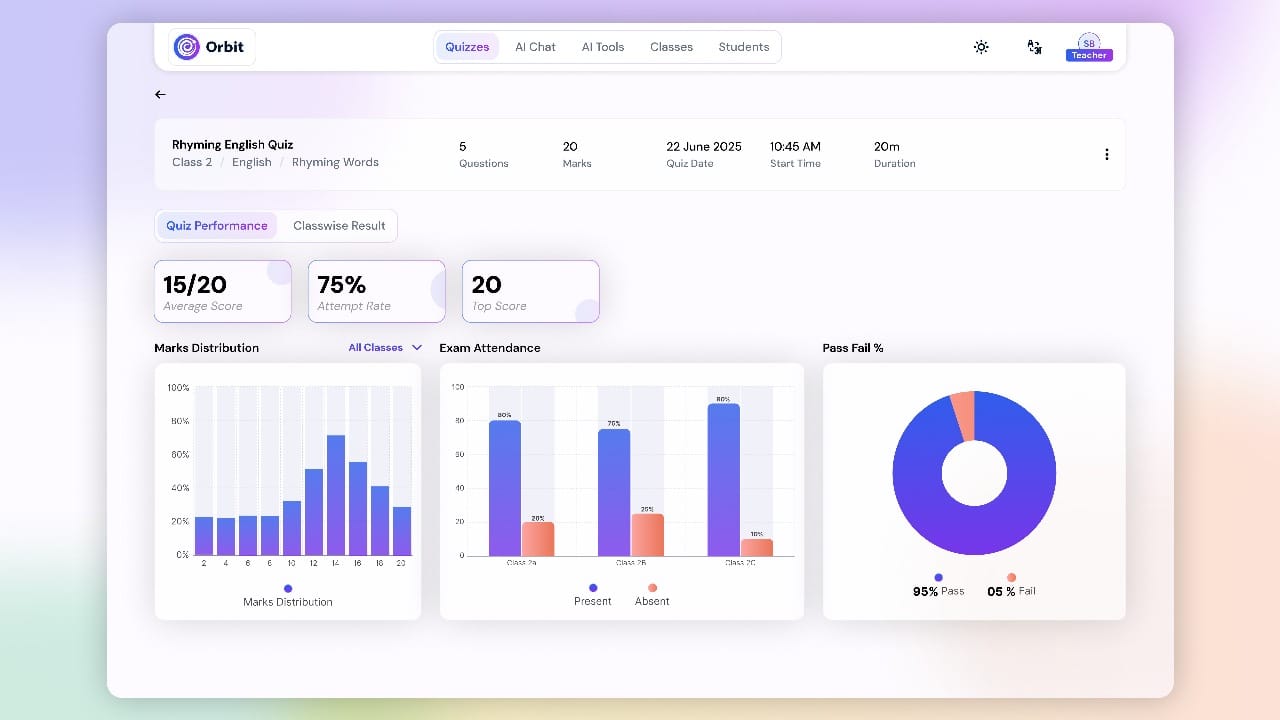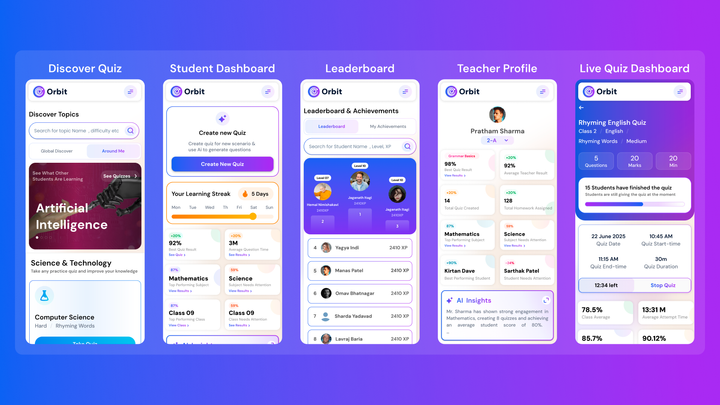From Behind the Brain: How Orbit’s AI Builds Smart MCQs

Since the announcement of Orbit AI in Nucleus has been aired, people who got the chance to use it have commented on Orbit’s smooth interface and many are wondering how Orbit manages to generate such spot-on, smart multiple-choice questions (MCQs) in just one click?
To the teacher, it's seamless. But behind the scenes, Orbit’s AI is busy thinking like a teacher, adapting like a student, and working like a curriculum expert. In this blog, let’s walk through how Orbit’s question generation engine works, why it matters, and how you (yes, you!) can shape it to match your teaching style and student needs.
1. What Powers Orbit’s MCQ Engine? Orbit is powered by a fine-tuned Large Language Model (LLM), trained on millions of academic texts, curriculum guidelines (like CBSE, ICSE, and international boards), and pedagogy best practices. But it doesn’t stop at just spitting out questions. The engine is designed to understand:

- Context of the topic (e.g., not just “photosynthesis,” but Class 7 vs Class 10 versions of it)
- Cognitive depth, using Bloom's Taxonomy levels (remembering, understanding, applying...)
- Tone and difficulty, adapting questions to beginner, intermediate, or advanced learners
Fact Check: A 2023 study by the Education AI Consortium found that adaptive MCQ systems increased student comprehension by 28% in formative assessments. Orbit’s AI is built with the same goal: smarter assessment = better understanding.
2. From Input to Output: How It Works Here’s a simplified flow of how Orbit generates questions:
Step 1: Teacher selects topic (e.g., Fractions or Mughal Empire)
Step 2: Orbit’s engine analyses the grade level, subject context, and past quiz history
Step 3: It generates a set of MCQs that are:
- Curriculum-aligned
- Varied in question type (recall, reasoning, application)
- Logically structured with smart distractors (wrong options that are actually good checks for understanding)
Step 4: Optional customization by the teacher (tone, length, difficulty, language)
Step 5: Quiz is ready. Students take it on any device, and Orbit tracks everything.

3. Customization: You Stay in Control You’re not handing over the reins. Orbit gives you full control:
- Tone Matching: Want the questions to sound conversational or exam-formal? Just tell Orbit.
- Difficulty Scaling: Adjust for class level, revision tests, or remedial practice.
- Learning Focus: Emphasize application, or keep it basic.
You can also edit questions after they’re generated—because Orbit believes in teacher + tech, not tech over teacher.
4. Analytics: Teaching With Feedback, Not Just Gut Feeling Orbit doesn’t just help you create quizzes. It helps you learn from them.
After your students take a quiz, you get:
- Attempt Rate: Who engaged, and who didn’t?
- Average Score: Across the class, and per question
- Top & Weak Topics: So you know where to reteach or slow down

These insights help you personalize learning and ensure no one falls behind unnoticed.
Pro Tip: Many teachers use Orbit's analytics in parent-teacher meetings to show learning progress with clarity.
5. Why This Matters (More Than You Think) Traditional assessments are time-consuming, paper-heavy, and often don’t capture the nuances of where students struggle. Orbit changes that.
- Faster feedback loops
- Less burnout for teachers
- More engagement from students
- Sustainable: No printing, no paper piles, just smart digital quizzes.
It’s like giving every teacher a co-pilot who handles the busy work while you fly the plane.

Conclusion: You’re Still the Brain. Orbit Is Just Your Boost. Orbit’s MCQ engine isn’t here to replace you. It’s here to help you do more of what you love: connect with your students. So next time you click “Generate Quiz,” know that there’s an intelligent system working behind the scenes—but your heart, vision, and experience are still what drive the lesson.
Explore Orbit’s Engine → Try creating your first smart quiz today.




